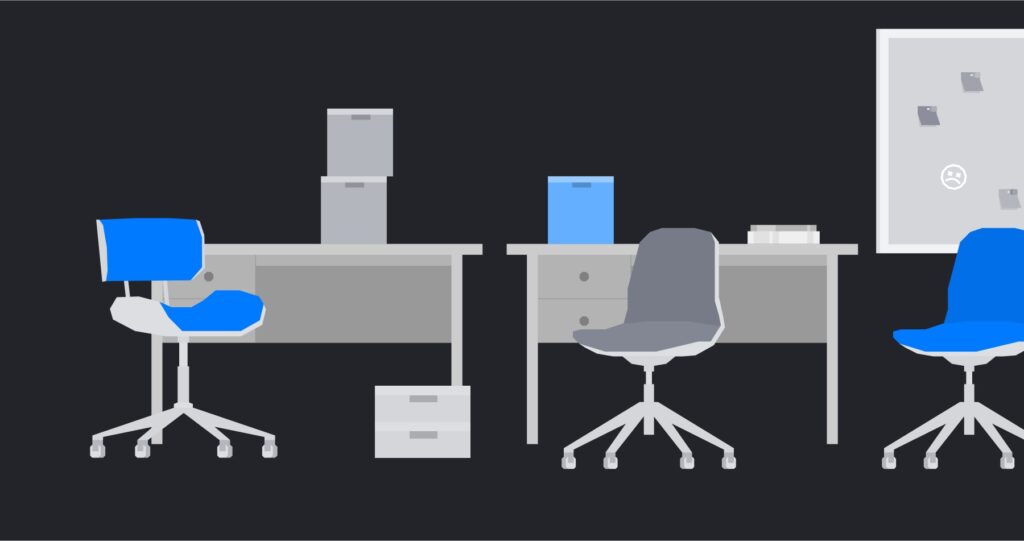The pandemic has changed people and society in ways we wouldn’t have thought imaginable just 24 months ago.
Lockdown restrictions and remote working allowed many employees to reflect on what they want to do with their lives and the sort of companies they want to work for, as well as those they don’t.
Consequently, in April 2021 four million US workers quit their jobs, and according to recent research by Microsoft, over 40% of employees are considering leaving their employer this year. It’s being called ‘#TheGreatResignation’, and it presents a whole pile of problems for CISOs and other security leaders.
Here are some of the common problems you might face in keeping data secure when staff move on.
Staff burnout
Let’s face it, everyone’s a little frazzled round the edges right now.
Our 2020 report, The Psychology Of Human Error, revealed that a shocking 93% of US and UK employees feel tired and stressed at some point during their working week. Staff burnout was real before the pandemic, and it’s only got worse during it as the months have turned into years.
Over half the employees (52%) we surveyed said they make more mistakes at work when they’re stressed. And we know that as some employees move on, others are left to pick up the slack, adding to their stress and further increasing the potential for human error.
This goes to show that this isn’t just a cyber security issue, it’s a people issue, so get your COO and HR team involved and start exploring ways to improve company well-being.
Mentally, they’ve already left
Staff who are leaving will have ‘mentally uncoupled’ from your organization and its processes well before they actually make their exit.
They’re distracted – perhaps even excited – about their new future and where they’re going. Our survey found that 47% of employees surveyed cited distraction as a top reason for falling for a phishing scam, while two-fifths said they sent an email to the wrong person because they were distracted.
This is made worse by the next problem…
“Hi, it’s Mark from HR, we haven’t met…”
Changing jobs can bring staff into contact with people they might not have had much contact with before. In a big multinational, we doubt many staff can name every member of the payroll team – they might even be in another country!
Our How to Hack a Human report found that an overwhelming 93% of workers also update their job status on social media, while 36% share information about their job.
If an employee has announced their imminent departure on social media, they can potentially be targets of spear phishing by hackers impersonating HR or operations staff. These could contain seemingly innocuous requests for key card returns, contract documents, and even IT hardware.
We’ve seen it before! Check out our Threat Catalogue to see real examples of phishing attacks targeting (and impersonating!) new starters.
Notice period exfiltration
Unless they’re leaving for a complete lifestyle change, like being a warden on a deserted Scottish island, many people tend to stay in the same sector or industry.
This means there’s a high probability of staff going to one of your competitors.
Our research reveals an increase in data exfiltration during an employee’s notice period. In fact, 45% of employees admit to “stealing” data before leaving or after being dismissed from a job.
You can see the temptation – what better way to make a great impression on your first day than by bringing a juicy file of customer data, source code, or other highly valuable IP. People will often extract these assets by emailing them to their personal accounts. This is a particular problem in sectors such as legal, financial services, and entertainment, where a client base and extensive networks are crucial.
New staff
So far all these problems have focused on leaving staff or those that remain, but another potential weak spot is the new hire that will replace them.
They’ve yet to undertake security awareness training on your systems and processes. They may have also announced their new role on social media (which means they could be victim to the same problem we explained in point 3).
It all comes back to one crucial point: 85% of data breaches are caused by human error.
How Tessian helps
Security leaders have a big job; they have to secure networks, endpoints, and platforms like Slack and Microsoft Teams. But email remains the #1 threat vector.
So how do you lock down email and prevent data exfiltration and successful phishing attacks? By empowering your people to do their best work, without security getting in the way.
We believe employees should be experts in their respective fields, not in cybersecurity. Tessian’s suite of products secure the human layer, so that staff can concentrate on their roles and be empowered to do their best work.
- Tessian Defender: Automatically prevents spear phishing, account takeover, business email compromise, and other targeted email attacks.
- Tessian Enforcer: Automatically prevents data exfiltration over email.
- Tessian Guardian: Automatically prevents accidental data loss caused by misdirected emails and misattached files.













